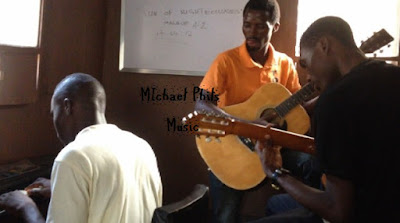Just 3 months??
Yes three months!!
For some people it’s been well 2 years, and they are still unable to play in their church’s local assembly, or even accompany themselves or a friend as
they sing. What could be the problem. There is a problem somewhere. Let us find out.
Before we get started, let me show you Somebody who started learning the piano just three months ago, and right now, he is playing to numerousworship songs that He hasn’t even heard before now. Even praise songs. I know that most beginners have issues with praise songs because of the speed; ladies and gentlemen there is no difference between playing worship and praise.
“You can play all songs, as long as you know the correct progression”
Music 5:8(Michael Phils Version)
Yes, progression with correct timing.
Did you see that? Now you believe you can also learn to play in three months.
Now Back to the reasons you are not able to play your musical instrument well after all these time.
- You think you know how to play: Some people will say, I know how to play worship VERY WELL, but I don’t know how to play praise. Ehn Ehn. Uncle am sorry oo, you don’t know how to play atall. You better humble yourself. Just because you know how to play “you are the pillar that holds my life”; you now think you can play worship abi?? If you think you know, you won’t be able to have that mind-set to learn. Now it’s time to sit down and score songs systematically, if you can’t score them yet, you should get somebody that can help you with them. Have a jotter where you write down songs that you score correctly, add songs to the jotter everyday, play all the songs everyday. You have started taking the right steps towards being a professional.
- You think you know what you need: I’m always pissed when people say “What i need now is bass line for makossa” or some will say “please i need general style for playing highlife, like 2 or 3”. If you know the basics of playing, you wont be after all these. Please note that there is no general progression that can play all songs that is sung in the church ooo, and it is not only makossa style that is used throughout a session of praise and worship. Biko. You need have a mentor, so He/She can help you and tell you what you should know. Click here for a list of basic things you should know.
- You don’t practice correctly: You need someone to guide you on how you should practice, so you won’t just be wasting your time. Can you move conviently from one simple chord to another? If that is a problem, you need to start coming up with series of chord progressions. Crazy ones at that. Are you unable to solo sings on your right hand while you are accompanying them on your left hand with chords? You need to to start practicing to do that. Do you spend quality time practicing? You need to do that, it might be a really boring process, but it would be worth it at the end of the day. There are so many ways to practice correctly, get a mentor, He will tell you what your weaknesses are and tell you how to overcome them.
- You don’t listen to songs (I’m not talking about songs like small doctor’s music oooo): The more you listen, the more you get know what to play. How can you play to a song, and you don’t know what you should sound like. You need to know what you want to play in your mind, before you can actually play it. Listen more, and let your bodyand soul get aquainted to the type of music you like to play. If you love to play the blues, listen to more of blues music. people like albert kings, BB kings and the likes. Do the same for other genres of music too. If it is Gospel, listen to gospel songs. And if you like to play for small doctor, listen to small doctor’s music.
- Join a choir or Band: Be commited to the choir or band, come to reharsals earlier than usual to practice. In this scenario, you are actually putting in practice what you have been reharsing at home. If you meet at least once a week, you would be learning to play one song every week. It would be your confidence experience. If you are not serious with you band or choir, you won’t be be pushed to do challenging things; therefore it would take you longer than expected to perform well.
There are still many more things you should know. We would keep you updated with more articles. God bless you.


